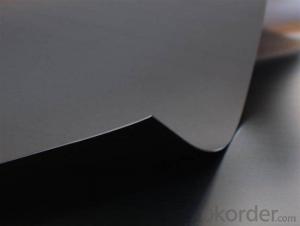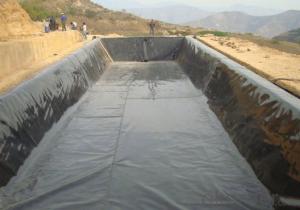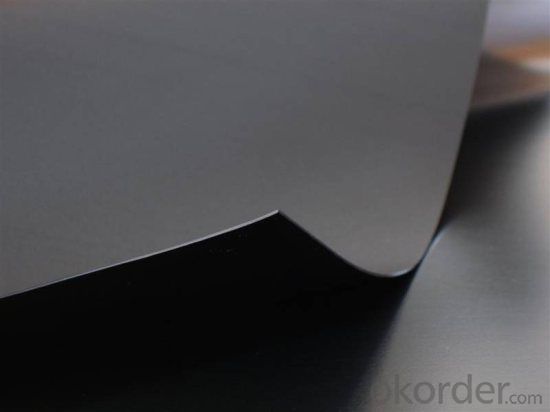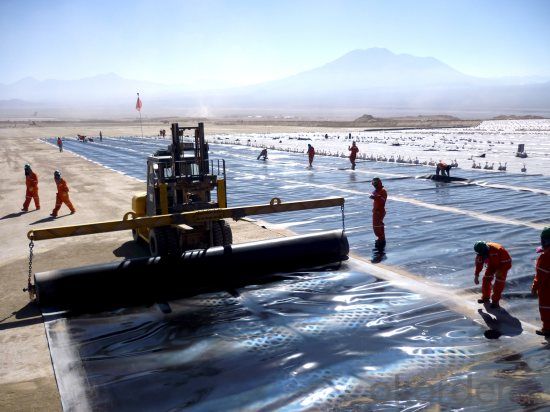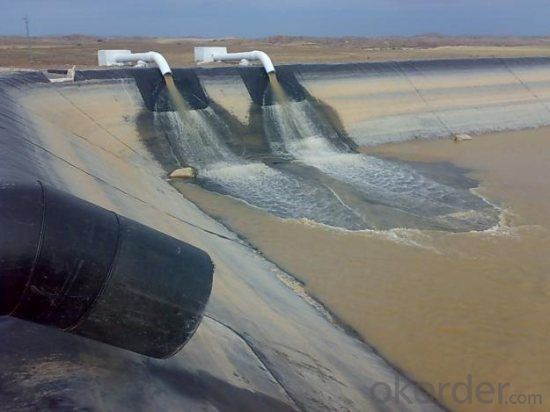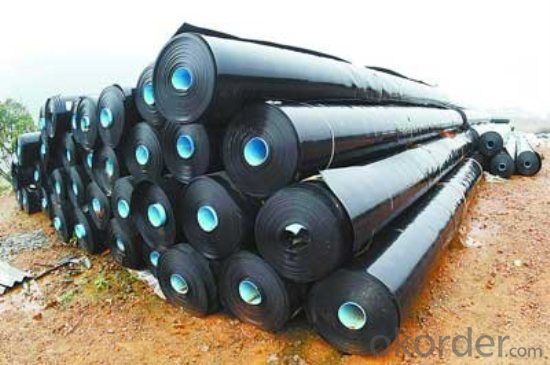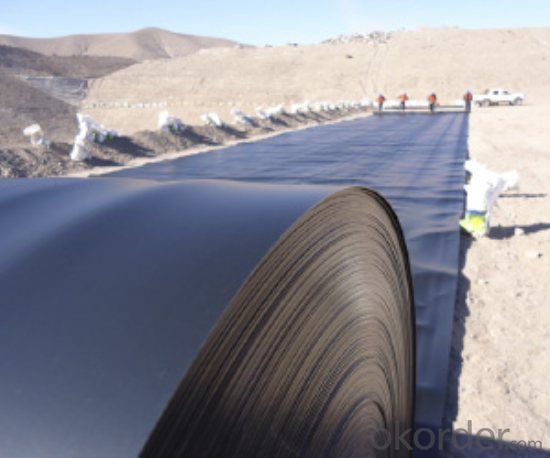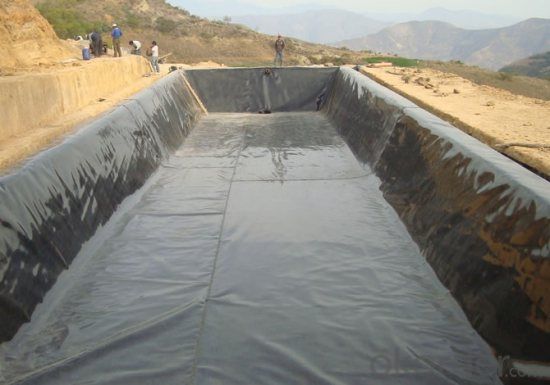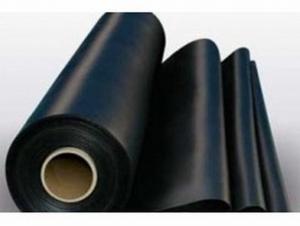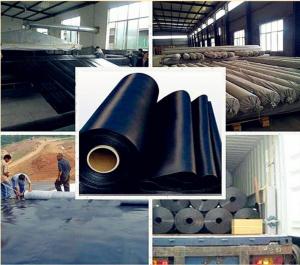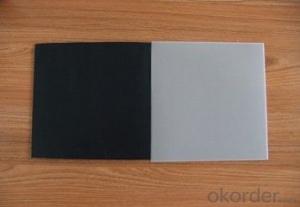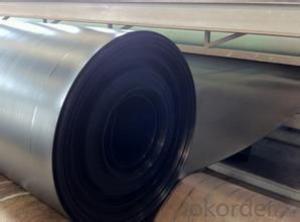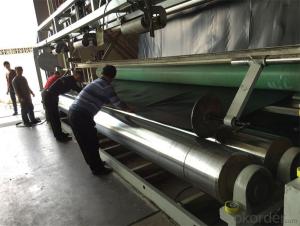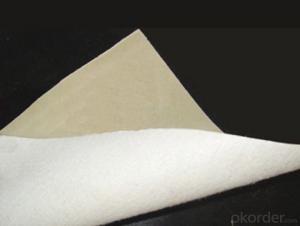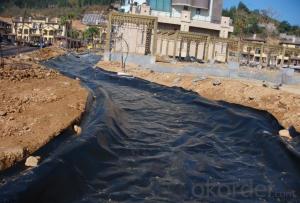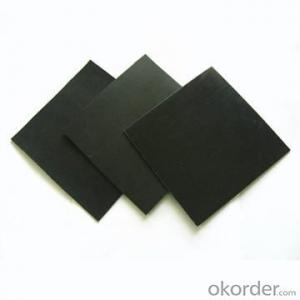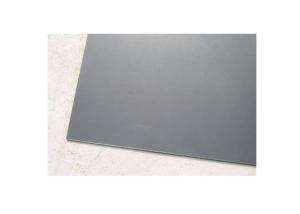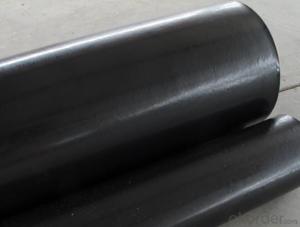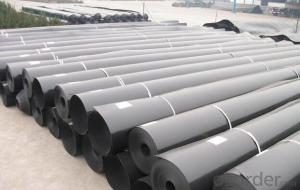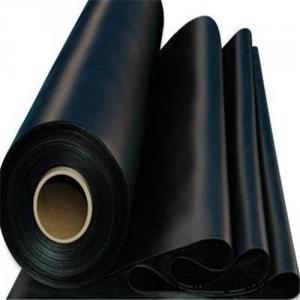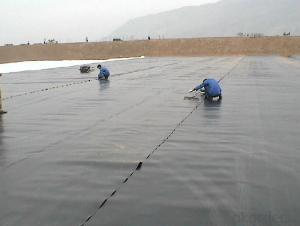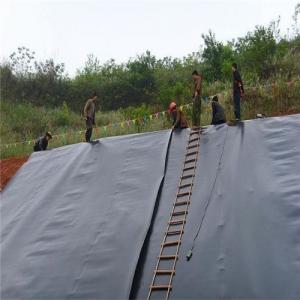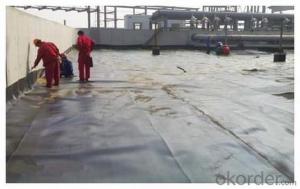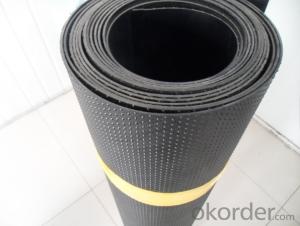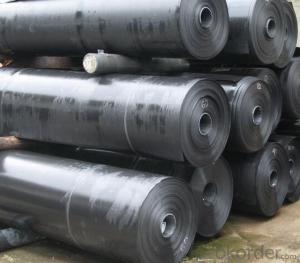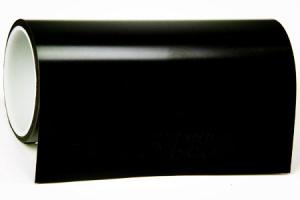Geomembrane Anchor HDPE for Architectural Engineering
- Loading Port:
- Qingdao
- Payment Terms:
- TT or LC
- Min Order Qty:
- 10000 m²
- Supply Capability:
- 100000 m²/month
OKorder Service Pledge
OKorder Financial Service
You Might Also Like
Geomembrane HDPE for Architectural Engineering
Description Of Geomembrane HDPE for Architectural Engineering
Geomembrane, also known as water-proof plate, is made from polymer materials like polyethylene, through blow molding.
Main Features of Geomembrane HDPE for Architectural Engineering
By its raw materials - molecular structure, Polyethylene (PE) geomembrane is divided into low-density polyethylene (LDPE) geomembrane, linear low density polyethylene (LLDPE) geomembrane, high-density polyethylene (HDPE) geomembrane;Aside from colorless and transparent raw material, you can made it into the black, green, blue, yellow, etc by adding different color masterbatch., also made into geomembrane with the black front and the blue back or other 2 different colors as required by customers.
Applications of Geomembrane HDPE for Architectural Engineering
1. HDPE geomembrane is applicable to environmental protection and sanitation: such as landfill, sewage treatment plant, power plant adjustive pool, industrial, hospital solid waste;
2. HDPE geomembrane is applicable to hydraulic engineering: such as seepage control, plugging, reinforcement for rivers, lakes and reservoirs and dams, drainage seepage control, vertical core wall, slope protection, etc.
3. HDPE geomembrane's applications in municipal engineering: subway, underground works of the building, planting roof, roof garden, sewage pipe seepage control;
4. Polyethylene impermeable membrane is applicable to the garden: artificial lake, river, reservoir, golf course pond bottom, slope, green lawn waterproofing and damp-proofing;
5. High density polyethylene geomembrane is applicable to petrochemical industry: chemical plant, oil refinery, storage tank seepage control, chemical reaction cell, lining and secondary lining for sedimentation tank, etc.
6. Polyethylene geomembrane is applicable to mining: washing pool, soaking pool, the ash-field, dissolving pool, settling pool, yard, tailings substrates seepage control;
7. Low density polyethylene geomembrane for transport facilities: foundation reinforcement for the road, culvert seepage control;
8. HDPE geomembrane is applicable to agriculture: seepage control for reservoir, drinking water pool, water storage pond, irrigation system;
9. HDPE geomembrane is applicable to aquaculture industry: the lining of intensive factory farming ponds, fish ponds, shrimp ponds, the sea cucumber ring slope protection, etc;
10. HDPE geomembrane is applicable to Salt industry: saltworks crystalline pool, brine pool thatch cover, salt membrane, the salt pool plastic sheet membrane.
IMages of Geomembrane HDPE for Architectural Engineering
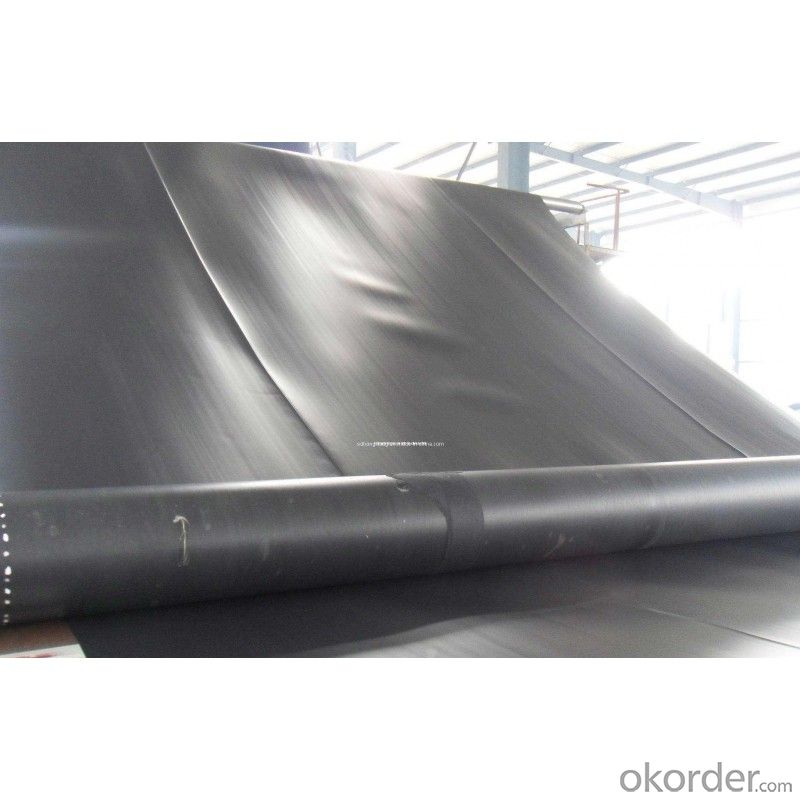
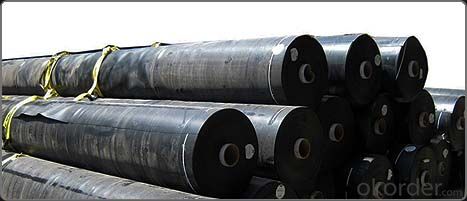
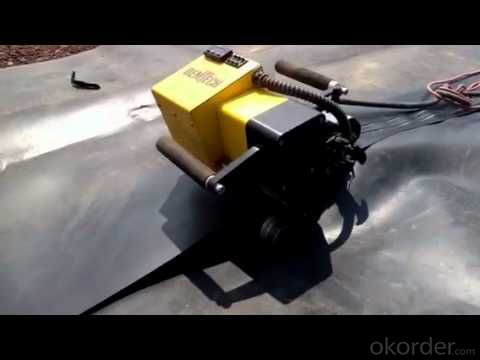
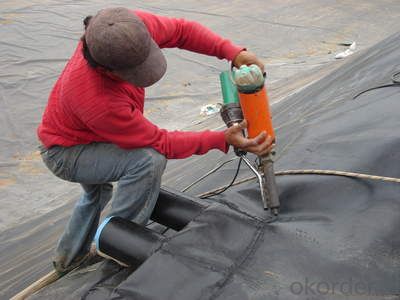
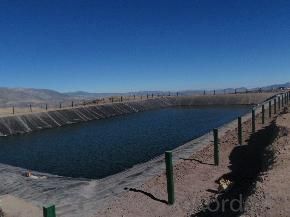
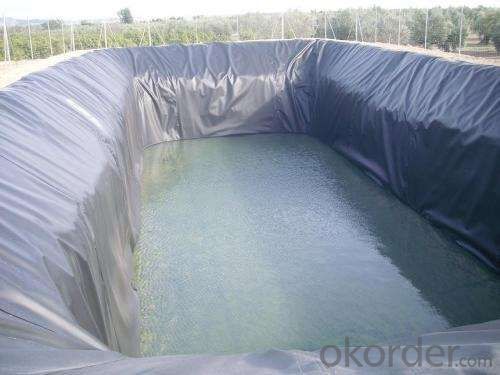
FAQ:
1. What are we supplying?
We are specialized in producing .geotextile , geocell, geogrid, geomembrane
2. How Many years experience do we have?
We have been exported to more than 15 countries in the past 10 years.
3. How long do we usually reply your request?
We always reply our customer within 12 hours.
- Q: What are the requirements of geomembrane waterproofing construction for the base?
- Geomembrane construction important surface poor base quality base quality directly affects the waterproof efficiency of plastic geomembrane plastic geomembrane as initial support (shotcrete, continuous wall) laying requires that the base surface should be very flat effortless and meet the ideal requirements according to engineering practice experience mention: Laying plastic geomembrane base should be flat without sharp objects base flatness should meet the D / L=1/6 ~ 1/10 requirements formula: D-- initial supporting base adjacent two convexes recess depth L-- distance between initial supporting base adjacent two convexes click ID to consult more questions
- Q: What are the limitations of geomembranes in extreme temperature conditions?
- One limitation of geomembranes in extreme temperature conditions is their susceptibility to cracking or brittleness. Geomembranes are typically made of polymers which may become rigid and lose their flexibility in extremely cold temperatures. This can result in cracks or tears, compromising their effectiveness as a barrier. Similarly, in extremely hot temperatures, geomembranes may soften or melt, reducing their strength and integrity. Therefore, proper selection of geomembrane materials and careful consideration of temperature conditions are crucial to ensure their performance in extreme environments.
- Q: What are the electrical conductivity properties of geomembranes?
- Geomembranes typically have low electrical conductivity properties due to their insulating nature. This means that they do not easily conduct electricity and have high resistivity.
- Q: Are geomembranes resistant to punctures from human activities?
- Yes, geomembranes are designed to be resistant to punctures caused by human activities. They are typically made from strong materials like high-density polyethylene or PVC, which provide excellent puncture resistance. However, the level of resistance may vary depending on the specific type and thickness of the geomembrane used.
- Q: Are geomembranes suitable for use in coastal areas?
- Yes, geomembranes are suitable for use in coastal areas. They are commonly used in coastal engineering projects to provide effective barriers against erosion, prevent water infiltration, and protect coastal structures. Geomembranes offer excellent durability, resistance to saltwater, and can withstand harsh environmental conditions, making them a reliable choice for coastal applications.
- Q: What are the requirements for geomembranes used in oil and gas storage tanks?
- The requirements for geomembranes used in oil and gas storage tanks include excellent chemical resistance to withstand exposure to various hydrocarbons and chemicals, high tensile strength to withstand the weight of the stored liquids, low permeability to prevent leakage, and durability to resist degradation from UV radiation and harsh environmental conditions. Additionally, geomembranes used in these tanks should have the ability to be welded or seamed together to form a continuous barrier and should comply with industry standards and regulations for oil and gas containment.
- Q: How do geomembranes contribute to the conservation of water resources?
- Geomembranes contribute to the conservation of water resources by acting as a barrier that prevents water from seeping into the ground or escaping from containers. They are used in various applications such as lining reservoirs, ponds, and canals, preventing water leakage and reducing evaporation. By effectively containing and preserving water, geomembranes help to conserve this vital resource and ensure its availability for various purposes like agriculture, drinking water, and industrial use.
- Q: How do geomembranes contribute to landfill capping?
- Geomembranes play a crucial role in landfill capping by acting as a barrier to prevent the release of harmful substances into the environment. They are placed on top of the landfill, effectively sealing it off and preventing the contaminants from leaching into the soil and groundwater. This helps to protect the surrounding ecosystems and human health while also preventing the spread of odors and gases from the landfill. Additionally, geomembranes can provide stability to the landfill cap, preventing erosion and ensuring the long-term integrity of the waste containment system.
- Q: How do geomembranes contribute to erosion control in railway and train track construction?
- Geomembranes contribute to erosion control in railway and train track construction by providing a strong barrier against water and soil movement. They are used as liners on slopes, embankments, and subgrades to prevent erosion caused by heavy rainfall, runoff, and seepage. Additionally, geomembranes help to stabilize the soil, reduce sedimentation, and protect the underlying infrastructure from damage, ensuring the long-term stability and durability of railway and train tracks.
- Q: How do geomembranes provide water retention in rooftop gardens?
- Geomembranes provide water retention in rooftop gardens by acting as a barrier between the garden soil and the rooftop surface. They prevent water from seeping through the roof and provide a waterproof layer, ensuring that the water remains within the garden area. This allows for efficient water management, reduces water runoff, and keeps the plants adequately hydrated, promoting healthy growth in the rooftop garden.
Send your message to us
Geomembrane Anchor HDPE for Architectural Engineering
- Loading Port:
- Qingdao
- Payment Terms:
- TT or LC
- Min Order Qty:
- 10000 m²
- Supply Capability:
- 100000 m²/month
OKorder Service Pledge
OKorder Financial Service
Similar products
Hot products
Hot Searches
Related keywords
